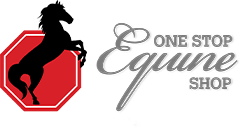There are strict rules for what is considered an acceptable bit for Dressage under USEF regulations, while other horse riding disciplines vary in what is considered acceptable. The USEF regulations for the Jumper Division have no specifications listed for bits, while the regulations for the Hunter Division have only casual mention for what is permitted. When investing in horse riding gear, it is worthwhile to purchase equipment that is legal in the discipline you ride in, or would like to ride in. Part of responsible equine management is taking into consideration the ethical aspect of choosing the right equipment, as well as what is permitted under USEF regulations, and what is best for your individual horse.
USEF Dressage Regulations for Acceptable Bits
The Dressage regulations are very extensive for the bits allowed, and not allowed, in Dressage. The level you are competing at has a lot to do with what is considered acceptable or permitted.
Lower Level Dressage
A snaffle bit is required for all tests and classes at Second Level and below. A snaffle bit is optional in Third and Fourth Level Tests. Both loose ring snaffles, as well as fixed rings are permitted.
Loose Ring Snaffles
Loose rings that are allowed include:
- single jointed mouthpieces
- double jointed mouthpieces (including a central flat link, a ball link, or oval link)
- mullen mouths, or unjointed snaffles
- french links
- snafffles with rotating middle pieces
- Happy Mouths with central rollers
- Fulmer snaffles (loose ring snaffles with cheeks)
Fixed rings that are allowed include:
- dee ring snaffles
- full cheek snaffles
- eggbutt snaffles
- snaffles with upper or lower cheeks
- snaffles with hanging or drop cheeks, like a Baucher; can be a dee ring or other ordinary snaffle
- snaffles with rotating middle pieces (such as the Myler Level 1 and Level 2)
Other Considerations
The mouthpieces must be smooth with a solid surface. This means that any wire or twisted bits are considered illegal. Only one rolling part is allowed on a mouthpiece. Bits can be flexible rubber or covered with rubber or plastic. They cannot be modified by adding any other material, however, and must conform to the contours of a traditional snaffle described in the lists above. If a double jointed bit or snaffle with a rotating mouthpiece is shaped to allow tongue relief, the maximum height of the deviation is 30mm, and the widest part of the deviation in bit shape must be over the tongue, so that the tongue is free from pressure, and have a minimum width of 30mm. The central link of a double jointed mouthpiece may be oriented differently than the mouthpiece, but must have rounded edges. For all horses, the diameter of the rings or bit cheeks, must be a minimum of 10mm.
Medium to Upper Level Dressage
In Third and Fourth Level Dressage, a double bridle is optional. FEI tests require the types of bits listed in this section. For double bridles, there are both bridoon (a snaffle used together with a curb bit to form a double bridle) and a curb bits to consider.
Double Bridles Bridoons
Permitted in this category are:
- loose ring bridoon bits
- bridoon bits with jointed mouthpieces where the central link is rounded (not a Dr. Bristol); eggbutt sides are allowed
- bridoon bits with rotating middle pieces
- bridoon rotary bits with rotating middle pieces
- bridoon rotary bits with rotating middle pieces and looped rings
- eggbutt bridoon bits
- bridoon bits with hanging cheeks
Legal curb bits include:
- half-moon curb bits
- curb bits with straight cheeks and ports
- curb bits with ports and sliding mouthpieces (Weymouth) or a curb bits with a rotating lever arms
- curb bits with S-curved cheeks
- curb chains in metal, leather, or a combination; can also have leather or rubber covers, with chain hooks fixed or not fixed
- lip straps are also permitted
Snaffle Bits
These are the same as the snaffle bits permitted for the Lower Level Dressage, with the addition of rotary bits with rotating middle pieces and looped rings.
USEF Hunter Regulations for Acceptable Bits
The hunter ring permits snaffle bits, pelhams, or full bridles. The judge has the right to penalize, but not eliminate, a hunter gag or kimberwick, among other unconventional snaffles, pelhams or full bridles. Three ring bits, gags (other than a hunter gag) and other similar bits are considered illegal for the hunter ring under USEF regulations.
USEF Jumper Regulations for Acceptable Bits
There are no specifications listed for acceptable bits under the USEF Jumper Regulations, but there are notes regarding use of draw reins and martingales. Deciding which bit works the best for your individual horse should be done in consultation with an experienced coach and trainer. Understanding how the bit acts is only prudent of the rider.
USEF Eventing Regulations for Acceptable Bits
Gags and hackamores are allowed for Cross Country, as well as other types of unconventional bits. In the dressage phase, snaffle bits made from metal, leather, plastic or rubber material are permitted. No bit guards are allowed. Double bridles with cavesson nosebands are permitted for some of the tests.

